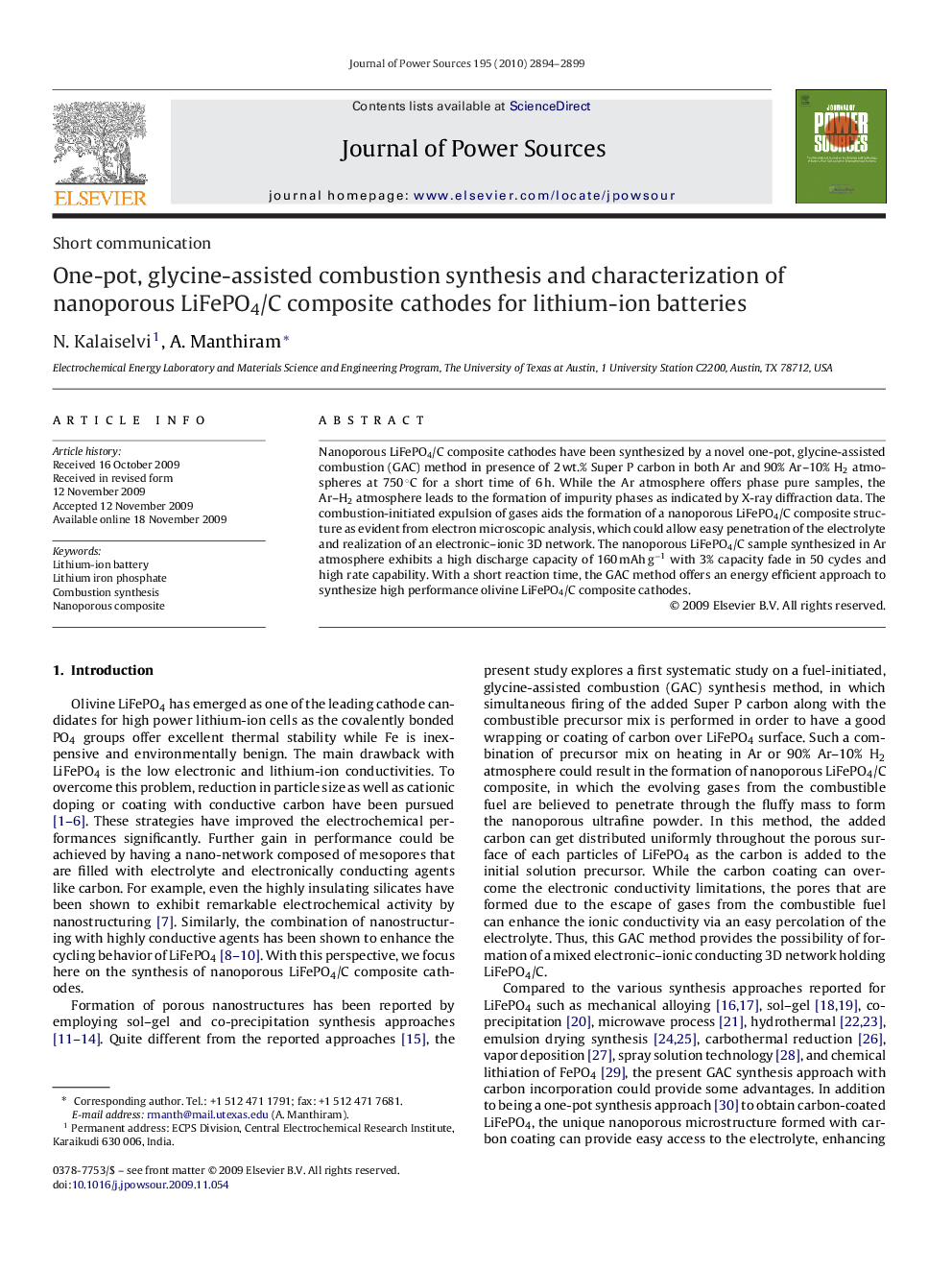| Article ID | Journal | Published Year | Pages | File Type |
|---|---|---|---|---|
| 1285050 | Journal of Power Sources | 2010 | 6 Pages |
Nanoporous LiFePO4/C composite cathodes have been synthesized by a novel one-pot, glycine-assisted combustion (GAC) method in presence of 2 wt.% Super P carbon in both Ar and 90% Ar–10% H2 atmospheres at 750 °C for a short time of 6 h. While the Ar atmosphere offers phase pure samples, the Ar–H2 atmosphere leads to the formation of impurity phases as indicated by X-ray diffraction data. The combustion-initiated expulsion of gases aids the formation of a nanoporous LiFePO4/C composite structure as evident from electron microscopic analysis, which could allow easy penetration of the electrolyte and realization of an electronic–ionic 3D network. The nanoporous LiFePO4/C sample synthesized in Ar atmosphere exhibits a high discharge capacity of 160 mAh g−1 with 3% capacity fade in 50 cycles and high rate capability. With a short reaction time, the GAC method offers an energy efficient approach to synthesize high performance olivine LiFePO4/C composite cathodes.
